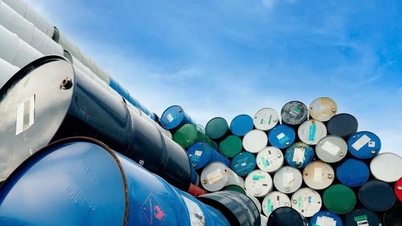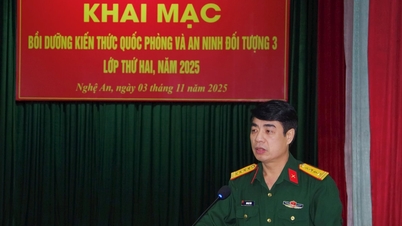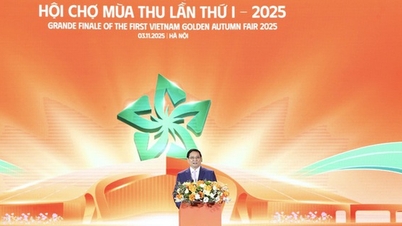More than 80% of the 130,000 Scout Terra and Traveler orders have chosen the extended-range (EREV) configuration. That’s more than 100,000 customers who still want the gas engine as a range-saving option, even though CEO Scott Keogh insists the brand’s long-term future is pure electric. With charging infrastructure still a concern for truck owners in the US, EREV is becoming a practical solution.

The market speaks: 80% in favor of EREV
Speaking to Bloomberg, CEO Scott Keogh said the majority of customers ordering the Terra (pickup) and Traveler (SUV) are opting for EREVs: “The market has spoken. More than 80% of the orders are for range extenders.” When asked if the company would prioritize launching EREVs first, he said the company would “respond to the market,” but stressed that there was no official announcement yet because both pure EVs and EREVs are in development and could go into production.
This trend isn’t surprising, considering Stellantis has killed off the all-electric Ram 1500 to focus on the extended-range version. The core reason: customers still want gas as a safety net.
Drive architecture: EREV series, no mechanical connection to the wheel
In the Scout EREV configuration, the naturally aspirated four-cylinder gasoline engine is located behind the rear axle, acting as a generator to charge the high-voltage battery pack and power the electric motor. According to the company, the engine has no physical connection to the wheels. The vehicle platform remains the same between the two configurations; both pure EV and EREV support DC fast charging.
NMC 120 kWh battery vs LFP half capacity
The Terra and Traveler pure EVs are expected to use nickel–manganese–cobalt (NMC) batteries of around 120 kWh, giving an estimated range of 350 miles (563 km). The EREV uses a smaller lithium–iron–phosphate (LFP) battery, about half the size of the NMC pack. Although LFP has a lower energy density, it is cheaper to manufacture.
Range: 563 km EV; 241 km pure electric EREV; total 800 km
The EREV is expected to travel approximately 150 miles (241 km) in pure electric mode. When the battery is depleted and charging stations are unavailable, the gasoline engine will operate as a generator to extend the total range to up to 800 km. The pure EV relies entirely on grid charging, with an estimated range of 350 miles (563 km) for the 120 kWh NMC battery pack.
Why does EREV make sense for truck users in the US?
For truck customers, concerns about charging infrastructure and downtime are major barriers. EREVs address this with a “safety net” of gasoline when needed, without changing the driving experience of the electric powertrain. This is why EREVs are overwhelmingly chosen during the transition period.
Product Strategy: Responding to the Present, Aiming for the EV Future
Scott Keogh has been blunt in his rejection of the possibility of a Scout with an internal combustion engine only. He stressed that the trend towards electrification is irreversible: “The technology is there, the innovation is there. We are at the early stages. The technology is getting better; the costs are only going to come down.” Accordingly, EREVs are a step to meet immediate needs, while pure EVs are the long-term destination.
Manufacturing and Investment Roadmap in Blythewood, South Carolina
The Terra and Traveler are expected to go into production in late 2027 at a new factory in Blythewood, South Carolina. After an initial investment of $2 billion, the company said it would add another $300 million.
Quick comparison table of pure EV Terra/Traveler and EREV configurations
| Category | Pure EV | EREV |
|---|---|---|
| Battery chemistry | NMC | LFP |
| Battery capacity | About 120 kWh | About half the size of an NMC package |
| Pure electric range | Estimated 350 miles (563 km) | Approximately 150 miles (241 km) |
| Total operating range | Charger dependent | Up to 800 km |
| Gasoline engine | Do not have | Four naturally aspirated cylinders, located behind the rear axle; generator only, not mechanically connected to the wheels |
| DC fast charging | Have | Have |
Conclude
Order data suggests that EREVs are the practical choice for Terra/Traveler customers today, thanks to the “range anxiety” that comes without sacrificing the electric driving experience. But the message from Scout leadership is clear: pure EVs are the way to go long term, as technology and costs continue to improve. With a production roadmap of late 2027 and billions of dollars in infrastructure investment, Scout is betting on a two-pronged strategy to meet immediate demand while preparing for an electrified future.
Source: https://baonghean.vn/scout-terratraveler-erev-lua-chon-cua-80-khach-dat-10309861.html


![[Photo] General Secretary To Lam receives Singaporean Ambassador Jaya Ratnam](https://vphoto.vietnam.vn/thumb/1200x675/vietnam/resource/IMAGE/2025/11/03/1762171461424_a1-bnd-5309-9100-jpg.webp)
![[Photo] Fall Fair 2025 and impressive records](https://vphoto.vietnam.vn/thumb/1200x675/vietnam/resource/IMAGE/2025/11/03/1762180761230_ndo_br_tk-hcmt-15-jpg.webp)


![[Photo] Lam Dong: Close-up of illegal lake with broken wall](https://vphoto.vietnam.vn/thumb/1200x675/vietnam/resource/IMAGE/2025/11/03/1762166057849_a5018a8dcbd5478b1ec4-jpg.webp)
![[Photo] Prime Minister Pham Minh Chinh receives the Chairman of the Japan-Vietnam Friendship Association in the Kansai region](https://vphoto.vietnam.vn/thumb/1200x675/vietnam/resource/IMAGE/2025/11/03/1762176259003_ndo_br_dsc-9224-jpg.webp)




































































































Comment (0)